We may earn commission from links on this page, but we only recommend products we back.
Editor's Note: This article was originally published in August 2021. While our choices are still valid, you may want to check with manufacturers and your tire retailer for updated versions of these tires before buying.
’
Getty ImagesBuying new tires can be a daunting experience. You face a bewildering array of brands, sizes and tire types to choose from, so it's easy to be confused. But don't worry: this guide will provide you with the essential facts you need to in order to make the right tire choice for your vehicle at the price you want to pay.
Before you buy, you'll need to know the answers to the following questions:
Already know about tires and just want our top picks? Our favorites in each category are listed below. Further down, you'll find more information about all-season, summer, and winter tires plus our top alternative picks in each category.
Best All-Season Tire
$93 at Amazon
Credit: AmazonBest Summer Tire
$332 at Amazon
Credit: AmazonBest Winter Tire
$307 at Amazon
Credit: AmazonIs our top pick unavailable in the size you need? Looking for a fast, easy way to sort through the dozens of alternatives? Then go to Tire Rack's Tire Decision Guide. The company says it'll have a list of appropriate alternative choices for you in two minutes or less. The tirerack.com site is also deep with important consumer data, including tire warranties, treadwear guarantees, and tire-test results.
$200 at Amazon$201 at Walmart
Credit: Amazon$138 at Tire Rack
$494 at Amazon
Credit: AmazonThe vast majority of vehicles today come with all-season tires, which are designed to provide acceptable all-around capability throughout the year and in all weather conditions. That means a reasonable ride and respectable handling, quiet running, good wet-weather grip, and some capability in snow. Given their all-season designation, most car owners leave them on in winter and expect that their tires will deliver all the traction they need on snowy, icy roads. But most all-season tires are marginal in snow; dedicated winter tires, also known as snow tires, provide far better traction when the snow falls.
That means a reasonable ride and respectable handling, quiet running, good wet-weather grip, and some capability in snow. Given their all-season designation, most car owners leave them on in winter and expect that their tires will deliver all the traction they need on snowy, icy roads. But most all-season tires are marginal in snow; dedicated winter tires, also known as snow tires, provide far better traction when the snow falls.
There are now two main sub-categories of all-season tires: high-performance all-seasons and grand touring all-seasons. High-performance all-season tires provide sharper handling than "standard" all-season tires. They grip the road more confidently and feel more sporty to drive—usually at the expense of some winter-weather traction. These tires are intended for sportier cars and more-aggressive drivers. Grand touring all-season tires have the lower-profile look of high-performance all-season tires but ride better at the price of some handling ability.
Recently, a subset of grand touring all-season tires has emerged that we call “all-weather” tires. These tires feature snow traction that almost comparable to that of pure winter tires while offering similar performance in other areas as conventional all-season tires. They are designated by a snowflake-within-a-mountain symbol on the tire's sidewall.
Summer Tires$327 at Amazon
Credit: AmazonNow 18% Off
$210 at Amazon
Credit: Amazon$211 at Tire Rack
This term is a misnomer, as this type of tire should rightly be called "three-season" rubber. Summer tires are designed specifically to deliver dry- and wet-weather traction in moderate or warm weather. They sharpen steering response, increase cornering traction by an order of magnitude, and stop your vehicle in much less distance.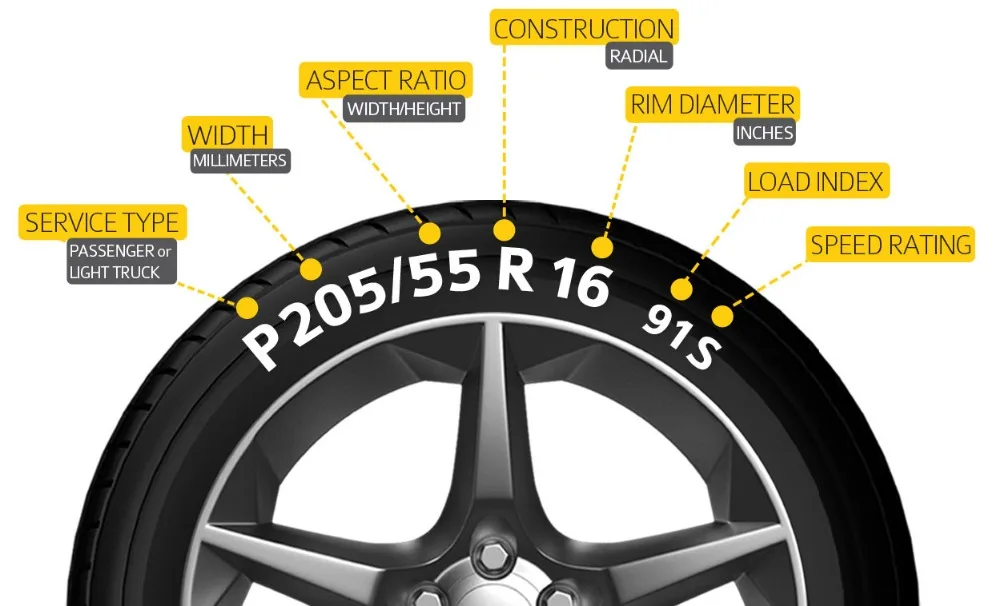 But they do so at a cost: most summer tires only work well at temperatures of about 40 degrees Fahrenheit and above. As outside temps fall toward freezing, the tires can feel skittish and behave inconsistently; they lose a large portion of their grip to the point that they act like they are on a wet or even icy road. More than one driver of a powerful car, unaware of the temperature sensitivity of its summer tires, has lost control and crashed on a cold day.
But they do so at a cost: most summer tires only work well at temperatures of about 40 degrees Fahrenheit and above. As outside temps fall toward freezing, the tires can feel skittish and behave inconsistently; they lose a large portion of their grip to the point that they act like they are on a wet or even icy road. More than one driver of a powerful car, unaware of the temperature sensitivity of its summer tires, has lost control and crashed on a cold day.
As with all-season tires, summer rubber comes in several varieties. Tire Rack divides these tires into three main groups by escalating capability: ultra-high performance on the bottom rung, followed max performance and extreme performance. Summer tires come on cars such as Porsches, Corvettes, Mercedes-AMGs, and Mustangs.
Winter TiresNow 15% Off
$141 at Amazon$183 at Walmart
Credit: Amazon$208 at Amazon
Credit: Amazon$469 at Amazon
Credit: AmazonCalled "snow tires" in the past, winter tires are designed to provide maximum traction in snow and in slippery winter conditions—and the traction they provide in those situations is not matched by any other category of tire. Even an all-wheel-drive vehicle on all-season tires cannot match the stopping or turning capability of a similar two-wheel drive vehicle fitted with four winter tires, a point we have proven in our own winter-tire testing.
Even an all-wheel-drive vehicle on all-season tires cannot match the stopping or turning capability of a similar two-wheel drive vehicle fitted with four winter tires, a point we have proven in our own winter-tire testing.
Winter tires are designed to work well in the cold-weather months, but they don't handle or wear as well as all-season or summer tires once the weather warms up. They should be considered as a second set of tires for your vehicle if you live where snow flies annually. We fit all of our long-term test vehicles with winter tires and they've proven their worth many times over.
Why use winter tires? If you live in the northern states, we recommend purchasing a set of winter tires. Their deep treads are engineered to deliver a significant traction improvement, and do they ever work. You'll feel safer and be safer, not to mention more relaxed when driving in snow. Retailers such as Tire Rack will sell you a set of snows mounted on steel wheels that you can swap on when winter rolls around. Here at Car and Driver, we swear by them.
Here at Car and Driver, we swear by them.
Tire Size and Other Factors
Most consumers choose to replace the worn tires on their vehicle with something equivalent in size and capability. This makes a lot of sense; your car was engineered to work well on the type and size of tires it came on, so fitting an identical or similar replacement set would maintain the performance and safety your vehicle was designed to deliver. (We'll get to upgrading later on).
To inform your decision process, you'll need to know your vehicle's tire size and speed rating, and you'll also want to consider how many miles you'll get out of any new tires you are considering (this is called tread wear). Much of that information is printed on the sidewalls of the tires that are on your car right now.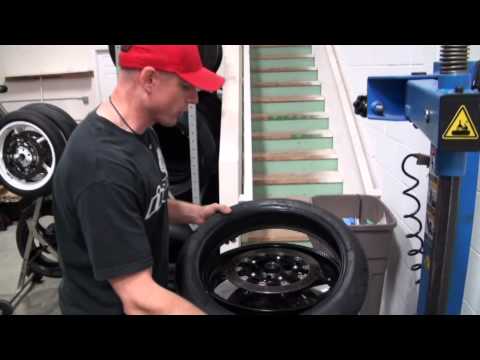 It's also available in most owner's manuals, online, and at tire dealers. (We suggest cross-checking those sources to make sure you've got the right information.)
It's also available in most owner's manuals, online, and at tire dealers. (We suggest cross-checking those sources to make sure you've got the right information.)
Here's how to read the most important data imprinted on your tires' sidewalls. (For an in-depth look at how to read all of the information on a tire sidewall, click here.)
KEY: 1) Tire width; 2) Aspect ratio; 3) Radial-tire designation; 4) diameter; 5) Load rating with speed rating; 6) Heaviest spot on tire; 7) Tread-wear rating; 8-9) Traction and temperature ratings; 10-11) Mud-and-snow or three-peak-mountain rating; 12) Vehicle-specific marking; 13) Tire-materials list and manufacturing information
Tire SizeIf you're going to replace your tires with something equivalent, you will need to know the proper size. The size of car and light truck tires is usually expressed in a short series of numbers and letters that read like this (as seen in the above illustration): 245/40-R18. The first number indicates the width of the tire at its widest point in millimeters. The number after the slash is what's called the aspect ratio, which indicates how tall the sidewall is as a percentage of the width. The higher the number, the taller the sidewall. The squat tires fitted to sports cars and muscle cars, called low-profile tires, have aspect ratios of 30–40. Family sedans and SUVs are in the 45-60 range or taller. The final number in the series is the diameter of the wheel in inches that the tire must mount to. The "R" indicates it's a radial tire, which virtually all of today's tires are.
The first number indicates the width of the tire at its widest point in millimeters. The number after the slash is what's called the aspect ratio, which indicates how tall the sidewall is as a percentage of the width. The higher the number, the taller the sidewall. The squat tires fitted to sports cars and muscle cars, called low-profile tires, have aspect ratios of 30–40. Family sedans and SUVs are in the 45-60 range or taller. The final number in the series is the diameter of the wheel in inches that the tire must mount to. The "R" indicates it's a radial tire, which virtually all of today's tires are.
Tires also carry a speed rating, which indicates not only how fast they can safely go for an extended period of time, but also the overall performance potential of the tires. Tires for high-performance cars have a higher speed rating than those for mainstream family sedans and SUVs. The speed rating of the original tires that came on your car were matched to the maximum speed the car could attain—plus a significant built-in safety margin. This speed rating is expressed as a letter in the alpha-numeric code that immediately follows the tire size. Letters range from L to Y, and cover maximum speed ranges from 75 mph to more than 186 mph.
This speed rating is expressed as a letter in the alpha-numeric code that immediately follows the tire size. Letters range from L to Y, and cover maximum speed ranges from 75 mph to more than 186 mph.
The are two pieces of data that will help you estimate how many miles you can expect from a set of tires: the tread-wear rating and the tire mileage warranty. The tread wear rating is listed as a number on the tire sidewall after the word "treadwear". The higher this number, the more likely the tire will last longer. But the tests that are used to determine treadwear aren't precise, so there is a lot of variability in this number.
A better way to gauge potential tire life, and to compare the expected longevity of different tires you might be considering, is to look at the manufacturers' tread-life warranties. Many but not all tires carry a tread-life warranty in addition to manufacturing-quality/defect warranties. This information can be found online (like this example from tirerack.com), or in the tire maker's marketing materials. The industry's general rule is that about three-quarters of all drivers will find that their tires last at least last as long as the mileage listed in the tread life warranty. Generally, if your tires wear out before the guaranteed mileage bogey, you can get a credit for the percentage of miles you came up short, which you can then apply to the purchase of a new tire. (Tire dealers routinely handle this transaction.)
This information can be found online (like this example from tirerack.com), or in the tire maker's marketing materials. The industry's general rule is that about three-quarters of all drivers will find that their tires last at least last as long as the mileage listed in the tread life warranty. Generally, if your tires wear out before the guaranteed mileage bogey, you can get a credit for the percentage of miles you came up short, which you can then apply to the purchase of a new tire. (Tire dealers routinely handle this transaction.)
Numerous automakers fit their cars with run-flat tires from the factory. These tires are capable of driving for short distances at low speeds even after a puncture has left them without air, allowing you to reach home or a repair facility without needing to change a flat on the side of the road. If your vehicle came on run-flats you have the option of replacing them with conventional tires and carrying a spare (but beware that some cars fitted with run-flats actually do not have a trunk compartment for a spare). Or, you can replace your worn run-flats with another set of run-flats. And now that tire-pressure monitoring systems are compulsory equipment in new cars, you could even fit run-flats on a car that didn’t originally come with them.
Or, you can replace your worn run-flats with another set of run-flats. And now that tire-pressure monitoring systems are compulsory equipment in new cars, you could even fit run-flats on a car that didn’t originally come with them.
Run-flat tires do have downsides. Their stiff sidewalls, which are required to hold the tire up when deflated, tend to make the car ride noticeably harder over rough pavement, but tire tech is continually improving and run-flats aren’t nearly the penalty they were a decade ago. Choice is also more limited than with conventional tires and run-flats are premium-priced. In general, we'd recommend swapping to conventional tires and carrying a spare or mini-spare if possible.
There's one more decision you need to make: do you simply replace the tires on your vehicle with something equivalent, or upgrade?
If you're going to replace what came on the car with something equivalent, you're ready to go. Peruse the online resources like Tire Rack to compare tires, and then either buy from one of them or head to a local tire store. The advantage of buying online is that you can get the exact tires you want; different brick-and-mortar tire stores sell different brands of tires. The online retailers have relationships with the chain tire stores, which will mount the tires you bought on the internet on your wheels (for a small fee) even though you didn't buy them there. Tire Rack has a decision guide to help you find the tires that fit your car.
Peruse the online resources like Tire Rack to compare tires, and then either buy from one of them or head to a local tire store. The advantage of buying online is that you can get the exact tires you want; different brick-and-mortar tire stores sell different brands of tires. The online retailers have relationships with the chain tire stores, which will mount the tires you bought on the internet on your wheels (for a small fee) even though you didn't buy them there. Tire Rack has a decision guide to help you find the tires that fit your car.
This is more complicated than simply replacing your tires, as you have several ways to go. You can choose a higher-performance tire of the same size on your current set of wheels by substituting, say, a high-performance all-season tire for a standard all-season—if you can find one that fits exactly. Or you can choose a set of wider, lower-profile summer or high-performance all-season tires, but this is trickier.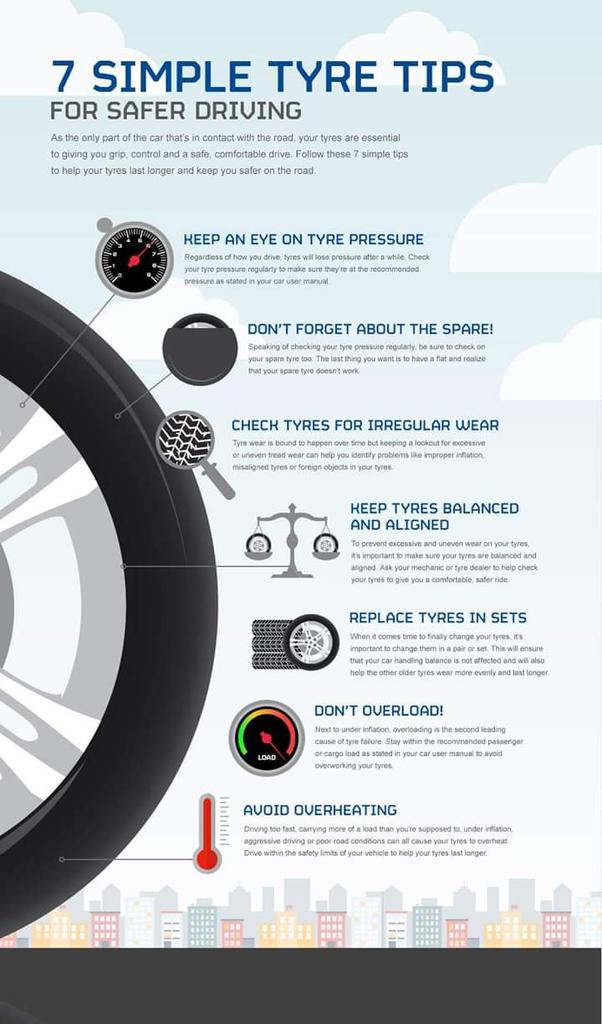 You need to know if the tires will fit without rubbing on the suspension or body parts—a definite safety issue. Here, consulting one of the experts at Tire Rack is a must, as they have this information for many cars. You can also try checking an online forum for your make and model of car (if one exists).
You need to know if the tires will fit without rubbing on the suspension or body parts—a definite safety issue. Here, consulting one of the experts at Tire Rack is a must, as they have this information for many cars. You can also try checking an online forum for your make and model of car (if one exists).
Many vehicles can be had from the factory with several different tire sizes—Honda Civics, for example, come with tires ranging from 215/55-R16 to 245/30ZR-20—so going to a larger-diameter wheel might work. But know that fitting lower-profile rubber will almost always require a larger-diameter wheel. The outside diameter of your tires needs to remain constant; everything from your vehicle's suspension to its ground clearance to its gearing is affected by the overall size of the tires. As the sidewall gets slimmer, the wheel must grow to compensate. Use this size guide to see how switching to a lower-profile tire affects wheel diameter.
Wider, lower-profile higher-performance tires can also make the car ride rougher, wear faster, be noisier, and influence the steering, possibly causing you to have to make more steering corrections on the Interstate.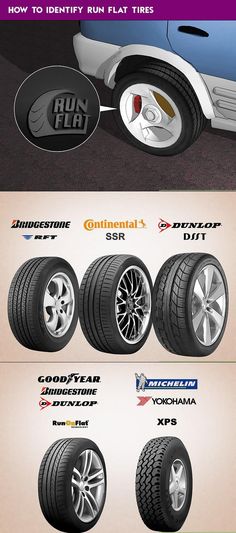 Low-profile tires will also probably be more prone to damage from potholes, something we experienced with one of our long-term cars, which blew out a dozen of its low-profile tires in the course of 40,000 miles on our rutted Michigan roads. And they'll almost definitely be more expensive, plus you'll have to buy a new set of wheels. You'll need to consider all of these issues carefully before you make the leap.
Low-profile tires will also probably be more prone to damage from potholes, something we experienced with one of our long-term cars, which blew out a dozen of its low-profile tires in the course of 40,000 miles on our rutted Michigan roads. And they'll almost definitely be more expensive, plus you'll have to buy a new set of wheels. You'll need to consider all of these issues carefully before you make the leap.
For everything you need to know about buying and maintaining tires, click here.
Rich Ceppos
Director, Buyer's Guide
Rich Ceppos has evaluated automobiles and automotive technology during a career that has encompassed 10 years at General Motors, two stints at Car and Driver totaling 19 years, and thousands of miles logged in racing cars. He was in music school when he realized what he really wanted to do in life and, somehow, it's worked out. In between his two C/D postings he served as executive editor of Automobile Magazine; was an executive vice president at Campbell Marketing & Communications; worked in GM's product-development area; and became publisher of Autoweek. He has raced continuously since college, held SCCA and IMSA pro racing licenses, and has competed in the 24 Hours of Daytona. He currently ministers to a 1999 Miata and a 1965 Corvette convertible and appreciates that none of his younger colleagues have yet uttered "Okay, Boomer" when he tells one of his stories about the crazy old days at C/D.
He has raced continuously since college, held SCCA and IMSA pro racing licenses, and has competed in the 24 Hours of Daytona. He currently ministers to a 1999 Miata and a 1965 Corvette convertible and appreciates that none of his younger colleagues have yet uttered "Okay, Boomer" when he tells one of his stories about the crazy old days at C/D.
Struggling to understand all the complexities involved in the tire-buying process may be enough to discourage many shoppers on their quest to learn how to buy tires that are right for them. In fact, it's enough to make your head spin.
As a leading innovator in tire technology, Bridgestone knows the most critical elements of the tire-buying process. We'll break them all down for you here clearly and concisely to help you find your compatible tires so you can get the most out of your vehicle.
That way, the only things spinning are the new tires on the wheels of your car.
There's no hard and fast rule governing how often to buy new tires; every driver and situation is slightly different. The best way to know whether or not it's time to buy new tires for your vehicle is to have them inspected by a trained professional.
The best way to know whether or not it's time to buy new tires for your vehicle is to have them inspected by a trained professional.
That doesn't mean it's the only way to alert yourself to a pending tire replacement. Follow these steps, and you'll learn a lot about the current condition of your tires.
Examine the treads. The treads are the part of the tire that make contact with the road surface. The tire tread should be deep and evenly worn without any irregularities. All DOT-regulated tires feature built-in treadwear indicators called "wear bars" to help you see when the tread is getting low. These indicators can be found in various places throughout the tread and appear when the tread is worn to one-sixteenth of an inch.
Look at the sidewalls. Tire sidewalls can take a beating against curbs, roadside debris and normal wear and tear. Inspect the sidewall of each tire to ensure there is no visible damage. This may include bulges, bubbling and flaking. Weakness along the sidewall can lead directly to a blowout or other potentially dangerous situations.
Weakness along the sidewall can lead directly to a blowout or other potentially dangerous situations.
Pro Tip: While you're looking at your tire sidewalls, note your tire size as well! The numbers will look something like this: P225/70R16 91S.
Enlist Abraham Lincoln's help. You'll do this thanks to the "penny test." Here's a full breakdown of the penny test. The penny test is important to help ensure your tires meet legal safety standards. To meet those safety standards, a tire's tread must be at least 2/32" deep. If the tires do not meet the 2/32" standard or are close to not meeting it, you should replace your tires. Tread depth below 2/32" can make your tires "illegal" in some states.
If your tires pass these inspections, you may not need to buy new tires just yet, particularly if you live in an area with a mild, dry climate. It's a good idea to reassess the tread every few thousand miles or once a month — more often if you're putting a lot of wear on your vehicle or driving for long distances.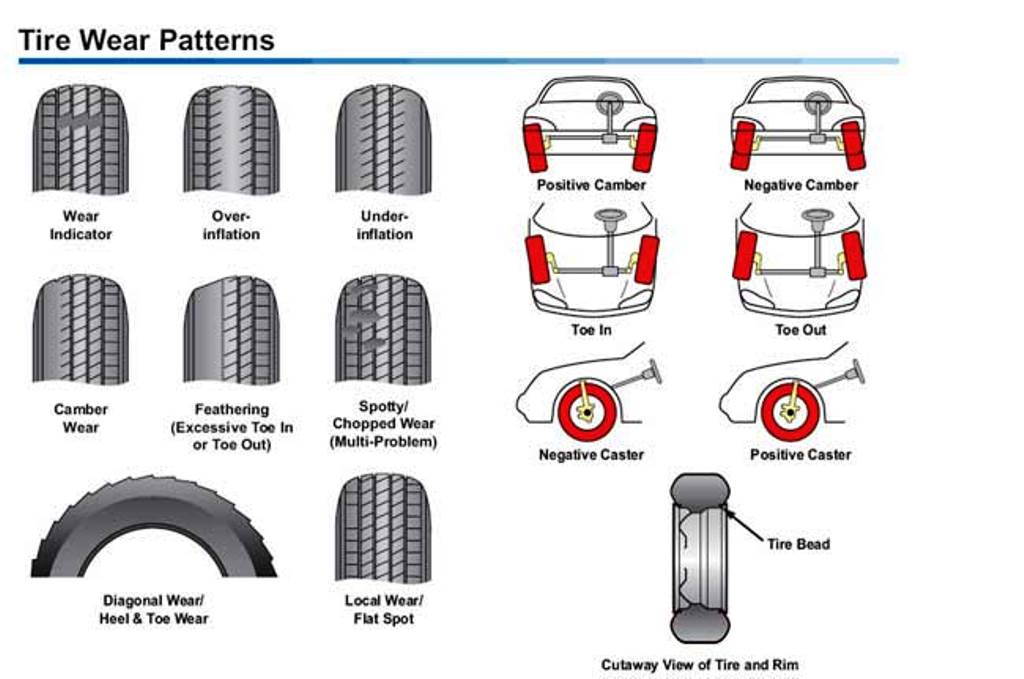 And, if you anticipate having to drive in severe weather — heavy downpours or snow, for instance — you may wish to not wait until your tires are completely worn out before replacing them.
And, if you anticipate having to drive in severe weather — heavy downpours or snow, for instance — you may wish to not wait until your tires are completely worn out before replacing them.
If your efforts from step #1 indicate a need for new tires, you need to decide which tires will work the best for your particular needs and driving preferences.
Assess your driving habits. Do you typically stick to city and highway driving? There are tires for that. Engage in any off-road adventures? There are tires for that, too. Perhaps the most significant deciding factor, however, is the climate in which you live. Even if the weather is typically mild, you need a tire capable of handling the rare but all-too-real weather extremes we all face from time to time.
Consider your footprint. Whether at work or home, nearly everything we do impacts our environment. Driving is no different. That's why it's essential to understand that the tire choices you make now will make an impact even greater than driving comfort and safety. At Bridgestone, we seek to help ensure a healthy environment for current and future generations and design tires with this mission in mind. It's why we offer Bridgestone Ecopia™ tires, participate in sustainability initiatives and encourage gas-saving (and emissions-reducing) tire care and maintenance.
At Bridgestone, we seek to help ensure a healthy environment for current and future generations and design tires with this mission in mind. It's why we offer Bridgestone Ecopia™ tires, participate in sustainability initiatives and encourage gas-saving (and emissions-reducing) tire care and maintenance.
Once you have a good idea of what's important to you and your vehicle's driving needs, you can match your driving style with your perfect tire type. The following are examples of popular tire types and the features that make them unique to a driver's needs.
ALL-SEASON TIRES
All-season tires are built for the average driver navigating a variety of road and weather conditions. All-season tires handle well in warm weather but are not intended to provide a summer tire's extreme grip or sportiness. They are also capable of managing light winter conditions, but not extreme cold, snow and ice.
How to buy tires for all seasons:

SUMMER TIRES
Summer tires are generally designed to provide enhanced high-speed stability, cornering and braking traction, and responsive handling on high performance vehicles. Low rolling resistance is not a priority for most summer tires, and they usually provide less tread life than their all-season counterparts. And, as their name implies, they are not intended for use in winter.
How to buy tires for summer driving:

WINTER AND SNOW TIRES
Winter and snow tires are built to help withstand freezing temperatures, slush, snow and icy road conditions. They offer wide tread gaps to trek through the snow and offer optimal winter traction, which can be necessary for drivers who must travel on unpredictable roads. However, they should only be used in cold weather conditions as tread will wear away quicker in warm conditions.
How to buy tires for winter and snow:
Following your research on tire type, you can identify the tires that best complement your vehicle's features and make a more informed decision when comparing tires.
Now you need to learn what size tires are right for your car. You can find this information in a few different place:
The numbers will look something like this: P225/70R16 91S.
Your efforts to master the tire-buying are in full swing. Next, we'll look at how to buy new tires and other elements of the tire-buying process.
For optimal performance and safety, consider replacing all four tires at the same time. Since your tires affect your vehicle's performance and handling, they must be as similar as possible.
If your tires don't match:
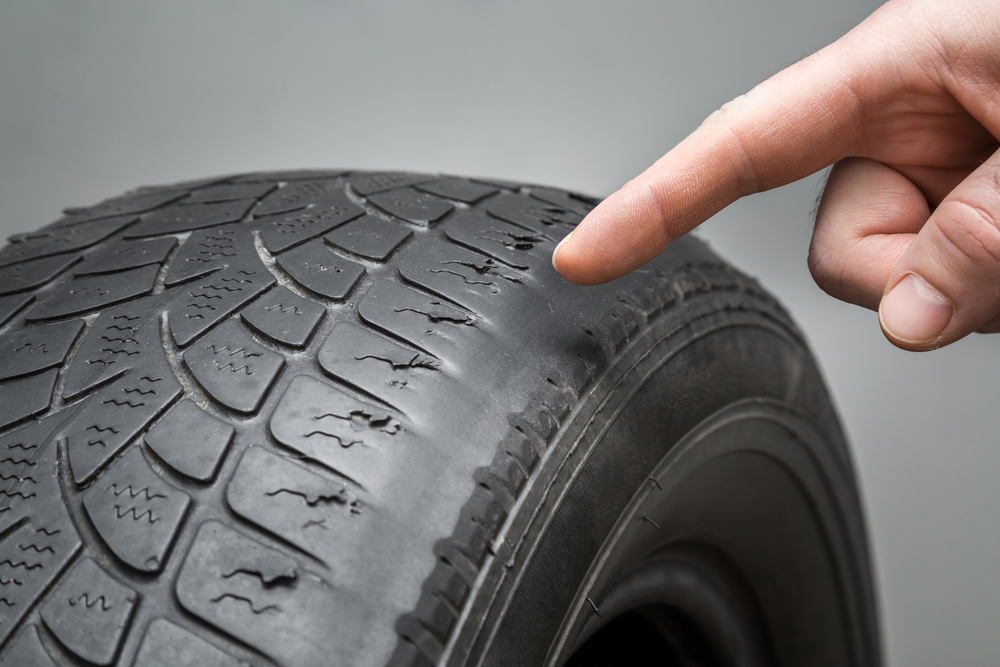 two new tires) may lead to excessive wear to drivetrain components.
two new tires) may lead to excessive wear to drivetrain components.Your tires keep your vehicle connected to the road, so having an even surface is vital. If you MUST only replace one or two tires:
It might be possible to save a little money shopping for used tires, but it's a financial benefit that comes with what may be a disproportionate loss in safety.
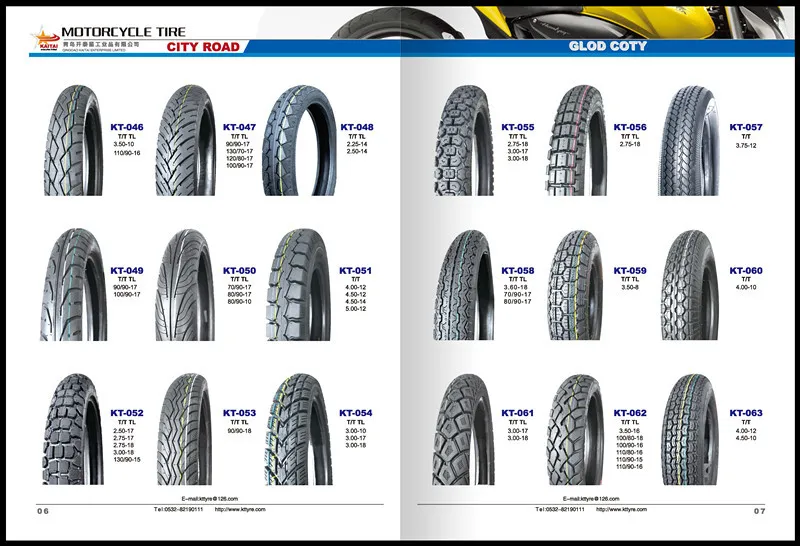
Additionally, CNN reports:
It is best to replace tires with new tires of the same category, brand, size and speed rating. It's also an excellent time to check your spare and make sure it's still up to the challenge of pinch-hitting if needed!
Once you know the general type and size of tire you want, it's also important to know what to ask the tire dealer to make sure you're choosing the best tire option for your vehicle.
Following these buying tips, you should now have a car that sports four new tires and a smooth, confident ride. Enjoy it!
Enjoy it!
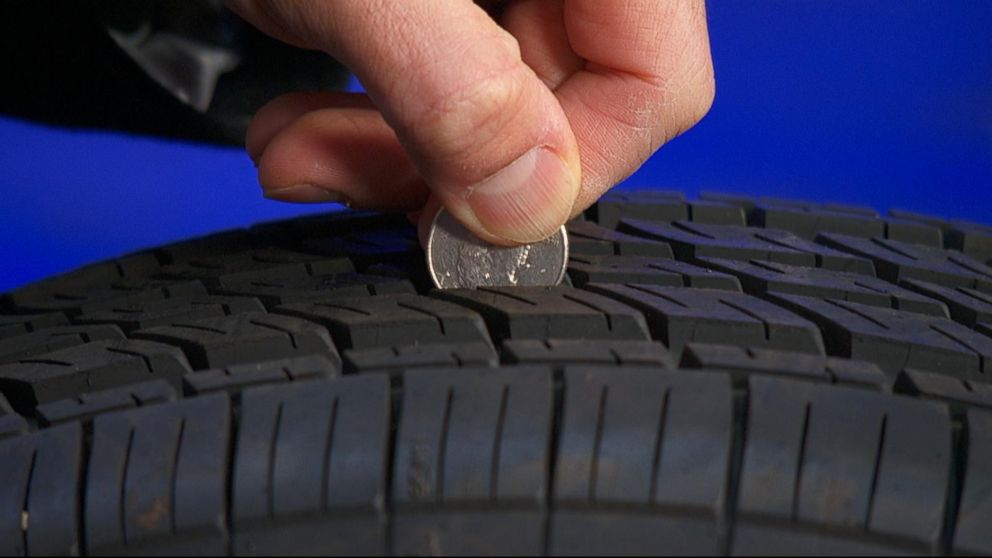 You just need to approach it responsibly and with your head. And most importantly, don't be afraid to do it. Well, our publication 1gai.ru will help you with this.
You just need to approach it responsibly and with your head. And most importantly, don't be afraid to do it. Well, our publication 1gai.ru will help you with this.
Recently at the editorial office we decided to study the automotive rubber market in Russia, and at the same time browse various network forums with thematic groups in social networks with a specific goal to get acquainted with the best tips for buying new tires. Based on this research, we have compiled a "TOP" of the best tips that will really help motorists and novice motorists to get the right tires for their car.
What is the advantage of researching such opinions and reviews on the Web? First of all, this allows you to move away from that loyalty to a particular brand. That is why we have deeply studied hundreds of pages of messages on social networks dedicated to car tires in order to understand for ourselves how motorists choose tires for their cars and what they are guided by when buying them.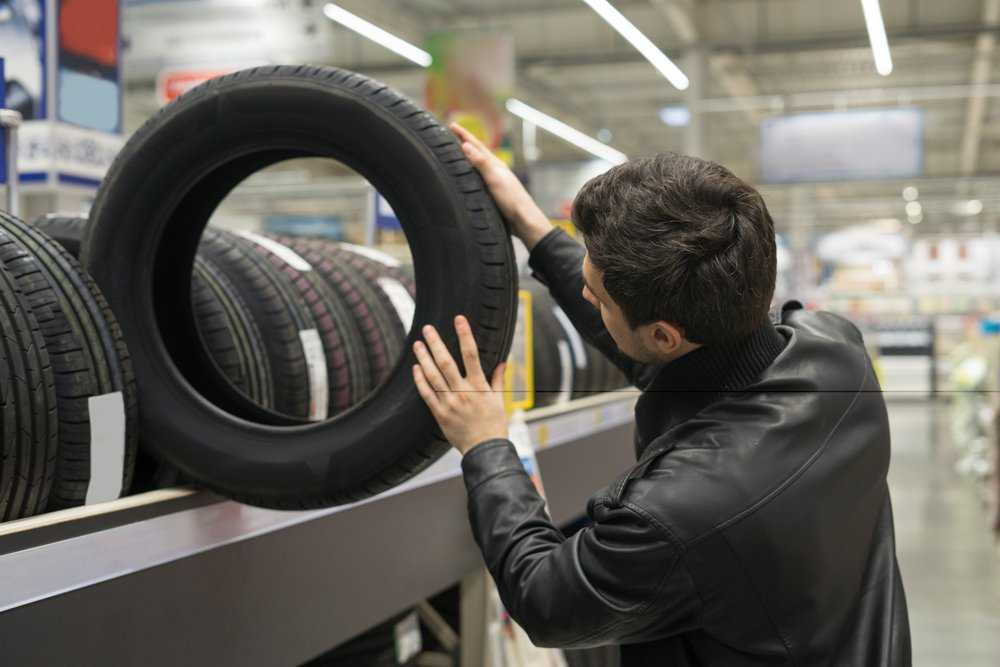 And so friends, let's see together what we encountered on the most popular forums on the Web and on the pages of popular automotive groups on social networks. Go!
And so friends, let's see together what we encountered on the most popular forums on the Web and on the pages of popular automotive groups on social networks. Go!
- Here are my (and our editors') 2 tips for those motorists who are puzzled about what tires to buy for them so that they won't regret it later:
For example, if the maximum resource of tires by the manufacturer is declared in the region of 50,000 thousand km, then you can listen to the opinion of such a motorist if he has already traveled at least 12,000 thousand km with such tires on a car.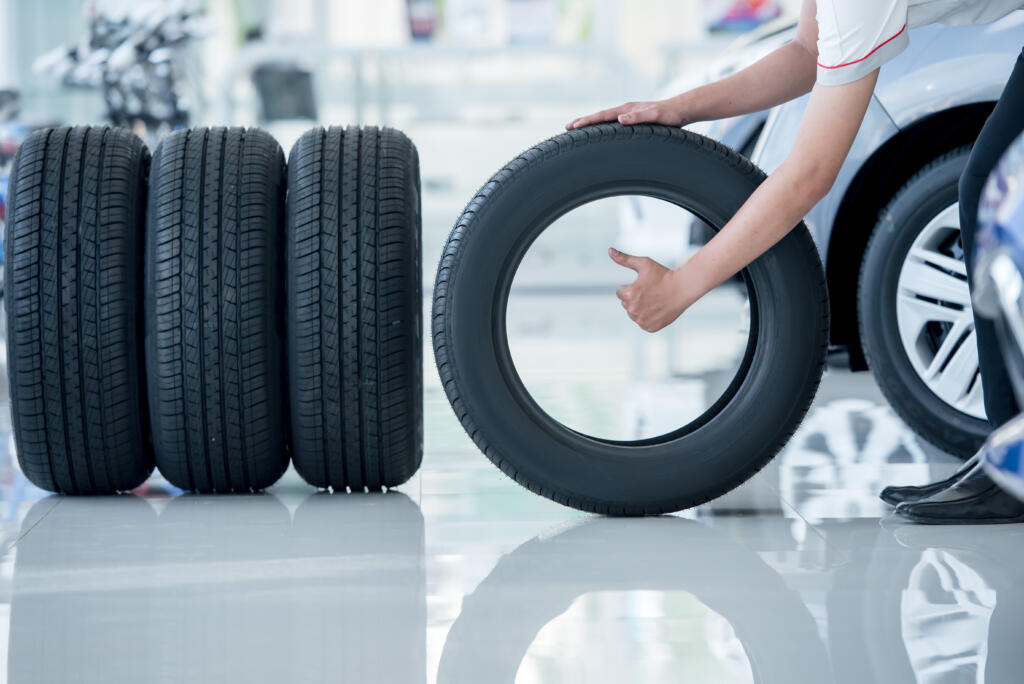 If the tire resource is declared by the manufacturer in the region of 80,000 thousand km, then an opinion from that (those) owner (s) of the car (s), who (s) this rubber has covered at least 20,000 thousand km, will be valuable.
If the tire resource is declared by the manufacturer in the region of 80,000 thousand km, then an opinion from that (those) owner (s) of the car (s), who (s) this rubber has covered at least 20,000 thousand km, will be valuable.
Remember friends that almost all tires when new are smooth, quiet, well balanced and have excellent grip. But, unfortunately, a lot of problems due to the quality of tires occur between about 25 - 50% of tire wear. Most often this happens when herniations and noise appear on the rubber, there is a problem with balancing, hydroplaning, etc.
So remember, friends, when you study reviews on the Web, we advise you to skip those messages from car owners about tires that have only recently been purchased and have traveled quite a few kilometers.
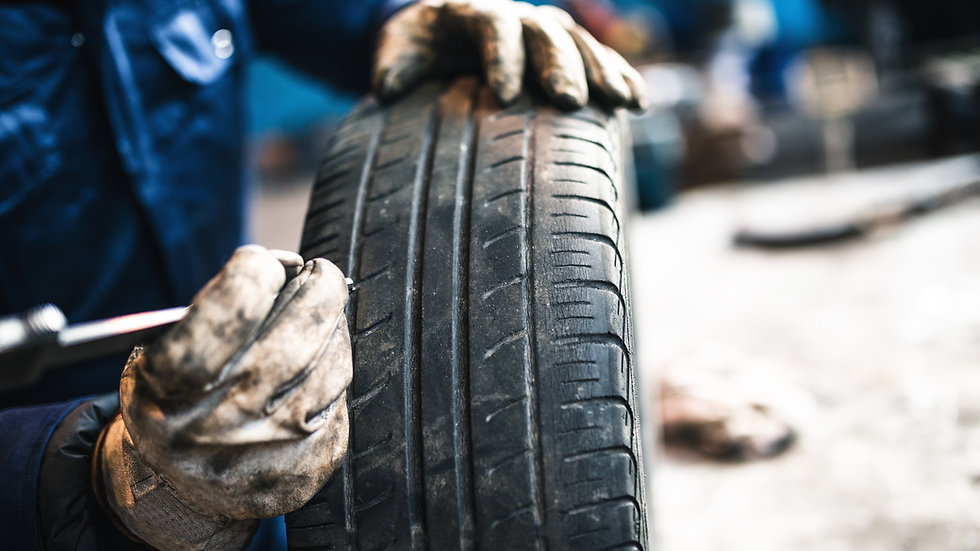 But alas, miracles do not happen. Such tires behave differently on different cars. As a result, one and the same rubber on one car can last as long as possible, while on another car it can turn into rags in just 10,000 km.
But alas, miracles do not happen. Such tires behave differently on different cars. As a result, one and the same rubber on one car can last as long as possible, while on another car it can turn into rags in just 10,000 km.
When you're trying to find reviews of a particular tire online, look for a review from someone who owns a car in the same weight class as your own car. It is also desirable that the engine power, wheelbase and the dimensions of the car themselves coincide approximately.
This will help you avoid reading reviews from minivan owners who swear on the web that their tires are comfortable and quiet, while small car owners curse these tires because of their constant hydroplaning on the road. Remember that the same rubber on different classes of cars behaves in completely different and opposite ways.
....
And finally, another tip. Although no, this is not advice, but my personal observation (not all of our employees in the editorial office).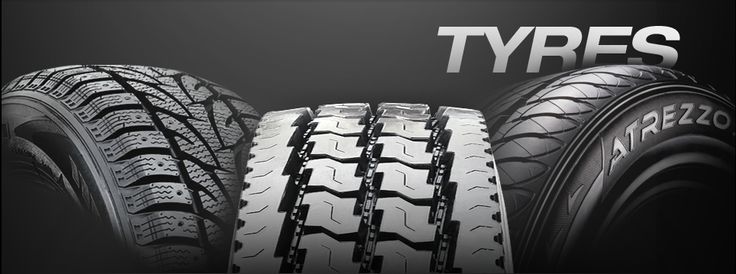 In recent years, manufacturers of high-quality expensive rubber have somewhat reduced the quality of their products. As a result, and therefore today, do not expect that the most expensive rubber will last you as long as possible. Today's price is no longer an indicator. Although until recently, manufacturers of inexpensive tires could not compete in quality with expensive rubber. And the thing is that today, manufacturers of expensive tires are more focused on the characteristics of their products, sometimes forgetting about its resource. True, this does not apply to all eminent brands of tire manufacturers. In most cases, expensive tires still last longer on average than cheap tires (tires). But again, keep in mind, it all depends on which car it is used on. Friends themselves understand that it is possible to kill tires of any manufacturer in the trash, and even in a very short time.
In recent years, manufacturers of high-quality expensive rubber have somewhat reduced the quality of their products. As a result, and therefore today, do not expect that the most expensive rubber will last you as long as possible. Today's price is no longer an indicator. Although until recently, manufacturers of inexpensive tires could not compete in quality with expensive rubber. And the thing is that today, manufacturers of expensive tires are more focused on the characteristics of their products, sometimes forgetting about its resource. True, this does not apply to all eminent brands of tire manufacturers. In most cases, expensive tires still last longer on average than cheap tires (tires). But again, keep in mind, it all depends on which car it is used on. Friends themselves understand that it is possible to kill tires of any manufacturer in the trash, and even in a very short time.
. If you wisely approach the process of purchasing new tires, you can save a lot of money on this. First, you should know for yourself that it is most profitable to buy tires for a car in the off-season, when there is a lull in car dealerships and tire shops. Usually this is the period from May to September-October and from January to March. As a rule, during this period there is a sharp decline in purchases of new rubber. Therefore, naturally, queues at tire shops also disappear. It is at this time that tire sellers usually make "delicious" discounts on tires, and tire shops lower the price tags for their services.
First, you should know for yourself that it is most profitable to buy tires for a car in the off-season, when there is a lull in car dealerships and tire shops. Usually this is the period from May to September-October and from January to March. As a rule, during this period there is a sharp decline in purchases of new rubber. Therefore, naturally, queues at tire shops also disappear. It is at this time that tire sellers usually make "delicious" discounts on tires, and tire shops lower the price tags for their services.
Secondly, each of you (the car owner) has the opportunity to purchase tires at a good discount at the very time when the manufacturer removes old tire models and replaces them with new ones. At this point, all stores are trying to get rid of old tires as much as possible and quickly. Naturally, this can be done only by offering good discounts on goods. At such moments, you can really buy new tires for your car at a decent discount. In some cases, motorists even manage to buy new tires at a 50% discount.
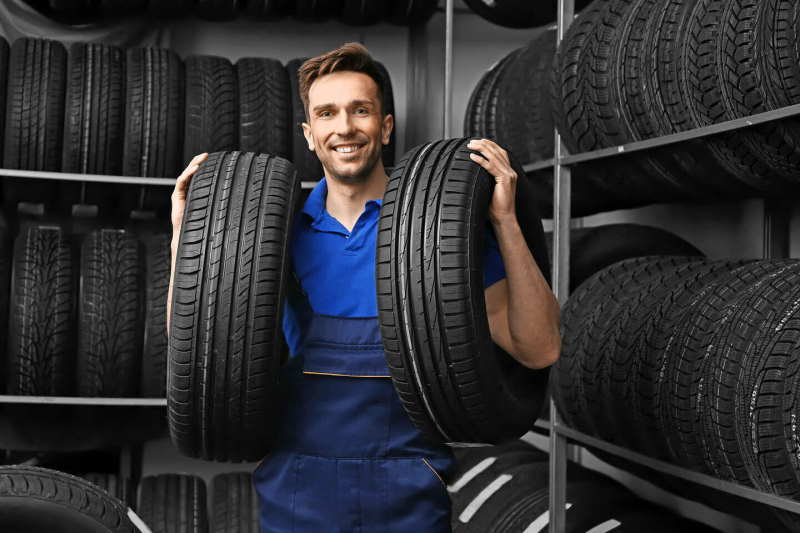 It often happens that in the first weeks of using new tires, their balancing flies.
It often happens that in the first weeks of using new tires, their balancing flies.
If your old tires died and you bought new tires, do not rush to put them on the car. First you need to diagnose the condition of the suspension and check the alignment of the wheels of your car. The fact is that on worn tires, you might not notice problems with the suspension or wheel alignment, in which uneven wear of the rubber tread is often observed.
So if you don't want your new tires to turn into worn out in a short time, it's better to pay money for suspension diagnostics and wheel alignment checks.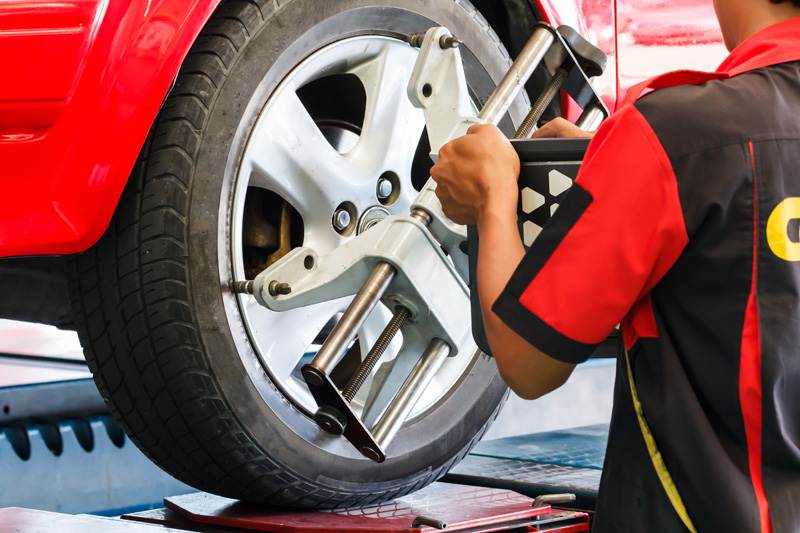
Buy tires with a recent production date. The fact is that even new tires degrade over time. Everything, of course, depends on the storage conditions of the new rubber in warehouses. But, alas, in our country no one cares about this. Many auto shops store rubber outdoors in direct sunlight. Meanwhile, any tires are afraid of ultraviolet radiation like fire. So if you buy new tires that have been under the sun for a whole year, then do not expect the longest possible service life from them. Therefore, before purchasing tires, be sure to check the date of manufacture of rubber. To do this, look for the four-digit DOT code on the sidewall of the tires, which indicates the week and year of manufacture of the tires.
Yes, studded tires are more expensive.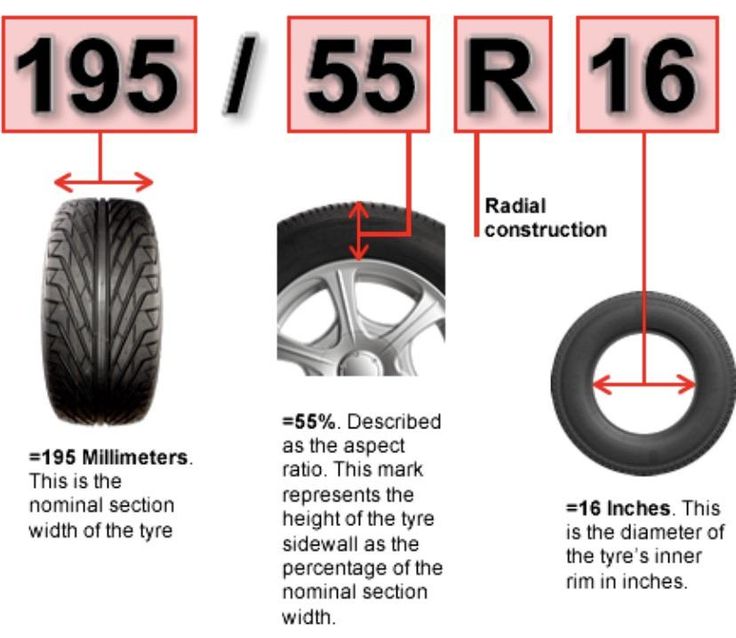 But this overpayment is worth it. You will not only get better safety on the winter road, but also better driving comfort.
But this overpayment is worth it. You will not only get better safety on the winter road, but also better driving comfort.
Also, if you own an SUV or 4x4, don't think that your car can change the laws of physics in the universe (unfortunately, many SUV owners think so). So don't expect your all-season 4x4 to do wonders on snowbound roads in Russia's northern regions.
Yes, buying all-season tires is very tempting. After all, buying tires for the whole year, we save not only on one set of tires, but also on tire fitting services at each change of seasons.
But believe me, this is an imaginary saving. In fact, there is nothing perfect in the world when it comes to universality. Did you know that all-season tires wear out faster due to tire chemistry? So, by purchasing all-season tires, get ready not only for less driving safety in winter, but also for more frequent purchase of new tires.
By buying two sets of tires, you will change tires much less frequently.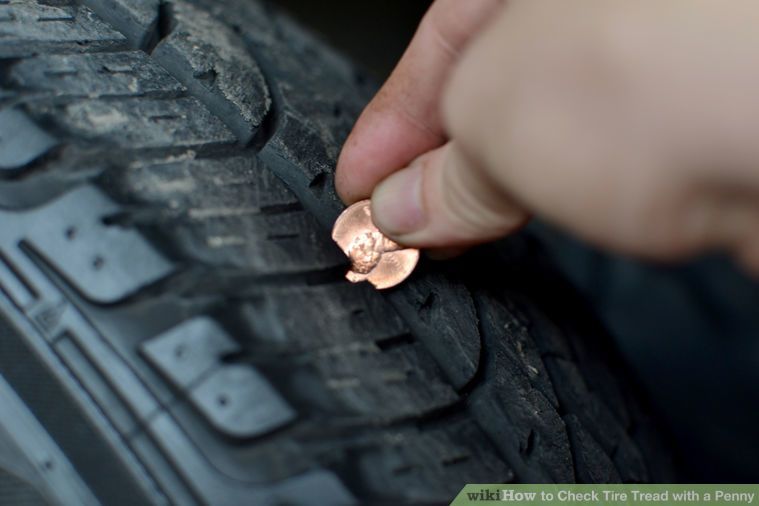 You will also get tires with better grip for certain weather/seasons. Including you will get the best security for every season.
You will also get tires with better grip for certain weather/seasons. Including you will get the best security for every season.
Never buy used tires. If you cannot afford to buy new tires, then you should think about whether you need a car at all. Maybe if you can't maintain and maintain it, it's worth selling it until better times?
Remember that buying used tires is a pig in a poke. You don't know how they were used before. Did their previous owner take care of them: regular balance checks, timely repair of punctures, careful driving without falling into deep holes, etc.
The fact is that when buying used tires, you may not notice damage to the inner tire cord (which usually manifests itself as a hernia). Unfortunately, since tires are most often sold without wheels, without air pressure in them, you are unlikely to see herniations on the tire sidewalls.
Yes, you can theoretically find good used tires on the market. But the probability of buying a dead rubber is greater. Don't forget it. Also keep in mind that the market today is full of refurbished used rubber, as well as outright Chinese fakes. So your savings can cost you exorbitant prices. Therefore, remember the wise saying: "We are not rich enough to buy cheap things."
But the probability of buying a dead rubber is greater. Don't forget it. Also keep in mind that the market today is full of refurbished used rubber, as well as outright Chinese fakes. So your savings can cost you exorbitant prices. Therefore, remember the wise saying: "We are not rich enough to buy cheap things."
I have been a tire specialist for almost 20 years and I can tell you a few useful things.
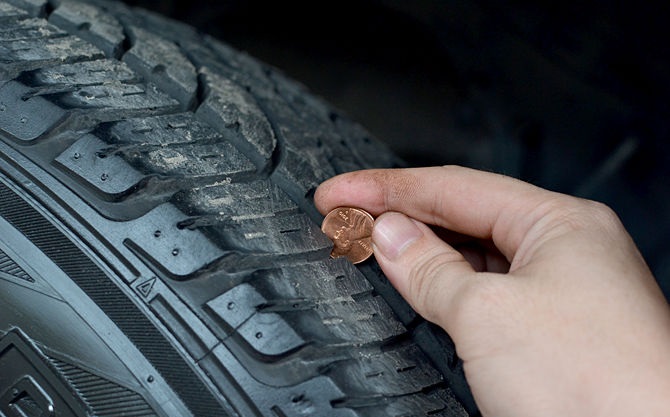
 If you are unsure which tires to purchase, contact a professional.
If you are unsure which tires to purchase, contact a professional.
In the store, before giving money for a new set of tires, carefully inspect the selected rubber model. You have no idea how much you can learn about rubber just by touching it. For example, by touching a tire, you can check how soft and thin the sidewall is. If the sidewall of a tire is too thin, it can be very susceptible to sidewall damage. If the sidewall is too soft, then your car may be unstable on the road. Especially in a rut.
In addition, always look carefully at the tread. Remember that over time, the tread on your tires will change as they wear. And the more all sorts of bells and whistles with a small tread, the faster your tires, as they wear out, will lose their main technical characteristics, which rubber manufacturers are so fond of talking about. So in some cases, depending on where you intend to operate your car, overpaying for fancy tire tread is not justified.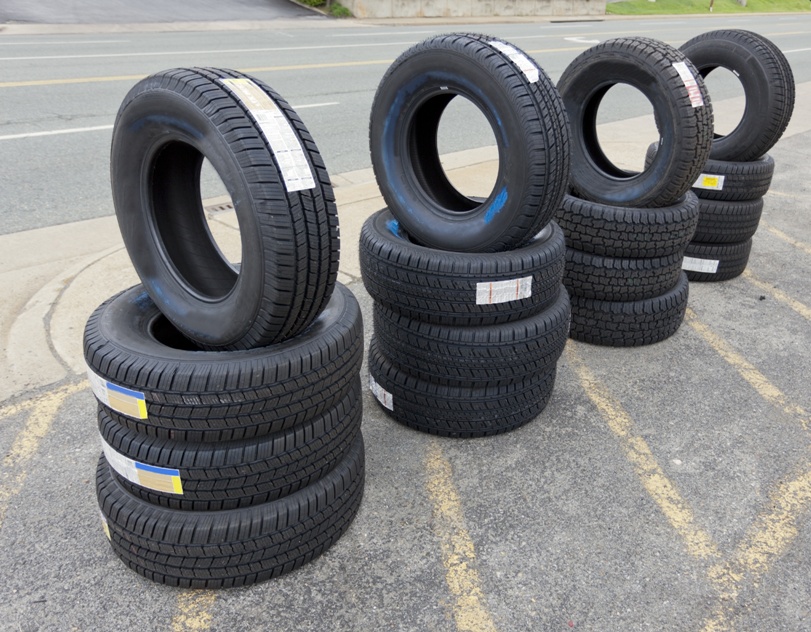 Indeed, many tread elements may already disappear due to wear by 10-15 thousand km.
Indeed, many tread elements may already disappear due to wear by 10-15 thousand km.
Remember that not all tires are the same. Some tires are designed for long-term intensive use, while others have a short life. Naturally, the stronger and more reliable the tires, the more expensive they are. Therefore, it makes no sense for you to overpay for tires with a large margin of safety and wear resistance if you drive a small mileage per year.
For example, if you drive 10,000 miles every year, then it makes no sense to throw money away on ultra-durable tires that cost a lot of money.
If you buy expensive branded tires that have an average life of about 100-130 thousand km, then with your runs you will wait a very long time for tread wear. On the one hand, this is good. But there is one significant minus, which crosses out all the pluses. The fact is that any rubber loses its physical and chemical properties over time. Moreover, this loss does not depend on the mileage of the car. As a result, even the most wear-resistant rubber becomes less flexible and uncomfortable after 6-7 years, which can turn your car into a terribly stiff vehicle. Many drivers even begin to think that the matter is in the suspension and shock absorbers. But what is their surprise when, after installing new tires, even the old car returns to its former softness and comfort.
Moreover, this loss does not depend on the mileage of the car. As a result, even the most wear-resistant rubber becomes less flexible and uncomfortable after 6-7 years, which can turn your car into a terribly stiff vehicle. Many drivers even begin to think that the matter is in the suspension and shock absorbers. But what is their surprise when, after installing new tires, even the old car returns to its former softness and comfort.
Which tires are better to buy: new or used? The question that every second motorist asks. We will try to talk about the pros and cons of both options.
Tires are a relatively inexpensive part of a car, but in total they cost quite a lot of money over the entire life of the car.
Car tires are one of the few car parts that needs to be changed regularly.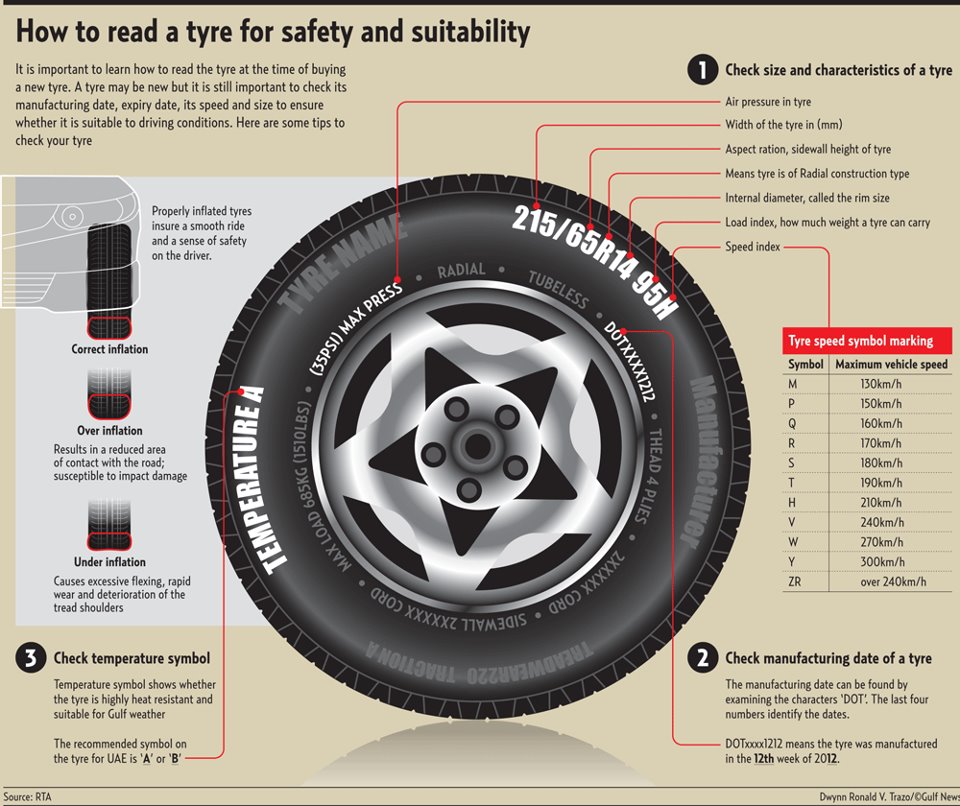 In many respects, this depends on several factors: the intensity of the vehicle’s operation, the time of year, the condition of the roads, the type of car, etc. Therefore, every self-respecting motorist must simultaneously own at least two sets: winter and summer tires.
In many respects, this depends on several factors: the intensity of the vehicle’s operation, the time of year, the condition of the roads, the type of car, etc. Therefore, every self-respecting motorist must simultaneously own at least two sets: winter and summer tires.
It's no secret that maintenance and service of your iron horse is not a cheap task. The same goes for changing tires. High-quality and reliable tires designed for high mileage are not cheap, so even people who are provided with everything are increasingly thinking about how to save money when solving this issue. One of these personal savings options is buying used tires. This article will discuss what is better and what are the advantages of this or that choice.
Tire warehouse
If you belong to that part of car owners who believe that used tires are dangerous and impractical, then we advise you to familiarize yourself with their classification:

Europeans tend to insure everything and everything. This also applies to car tires, which are replaced when damaged or worn. Moreover, the entire set changes, even if one part of it is damaged. The depreciation of the unit in this case does not exceed 10%.
The supplier again is Europe with all its features and nuances of the automotive business. Scheduled maintenance obliges drivers to replace if the tread height has worn out by 3-4 mm. This means that for our roads and cars, this tire will be of very high quality.
Many (if not all) car manufacturing companies enter into contracts for the supply of tires for their models. However, before shipment, they undergo a so-called test drive. At the same time, those tires that directly participated in it are either sent for recycling or sold as used.
have either their own resources (our tires are worn out by 75-90%, which almost completely negates the possibility of their further use), or quality samples brought from abroad. Which one you get is a matter solely of your understanding of the problem. Therefore, used tires are a justified risk to save money.
Which one you get is a matter solely of your understanding of the problem. Therefore, used tires are a justified risk to save money.
Having bought a new tire, you can not worry about its condition and safely put it into operation. This cannot be said about used tires, as there may be defects or damage that indirectly or directly affect your safety on the road. We have identified for you the main types of damage that are easy to see with the naked eye:
 This damage occurs as a result of collision with large and hard objects (curbs or stones). Whether it is repairable or not depends on many factors, but it is better to avoid such a purchase if possible. Tires that bulge or bulge after inflation should also be avoided. If the rubber in the tire is not balanced, then there is a direct danger of its use.
This damage occurs as a result of collision with large and hard objects (curbs or stones). Whether it is repairable or not depends on many factors, but it is better to avoid such a purchase if possible. Tires that bulge or bulge after inflation should also be avoided. If the rubber in the tire is not balanced, then there is a direct danger of its use. Ask a workshop to disassemble the tire if it is assembled on the same used wheels. And let it not seem to you excessive arrogance, because now we are talking about your safety.
Many experienced drivers believe that the most important thing in a used tire is the remaining tread height. In fact, this can only tell you how much it will last. Much more attention should be paid to its integrity and safety. By the way, manufacturers of modern tires equip their products with special indicators that show how much the tire has worn out. It is believed that the maximum distance from the end of the tread to the rubber should be 1.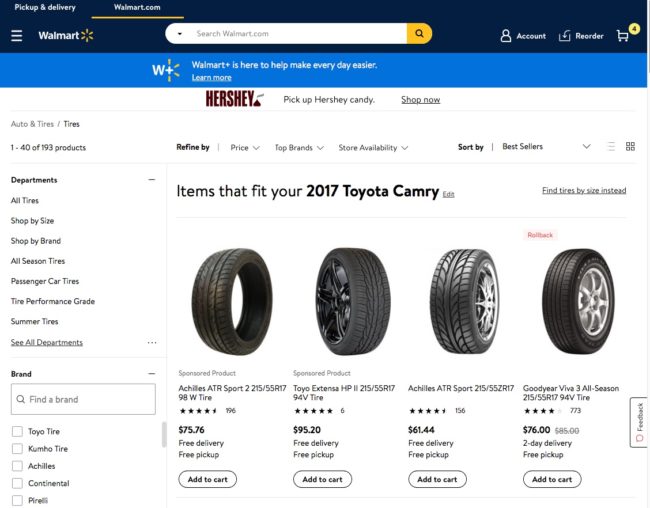 8 mm.
8 mm.
You should also not resort to buying car tires that were manufactured more than 7-8 years ago. It is not known how they were stored all this time and under what conditions they were used. It is very difficult to trace their history, so it is better to simply ignore such proposals.
We return to the fact that it comes down to the experience and personal skills of the driver himself. If knowledge allows you to confidently select quality tires from a trusted supplier, then this should be given attention. Otherwise, buying new ones will not become prohibitively expensive for you, and in some cases even save money. Simple math - the average level of tire wear is 50-55%, that is, they will last almost 2 times less than new tires. At the same time, their price is only 30-40% lower, so it's up to you to decide what to do.
New tires are new tires. It is perfectly balanced, has not been subjected to various loads and is ready to serve you for several years and seasons immediately after it has been broken in.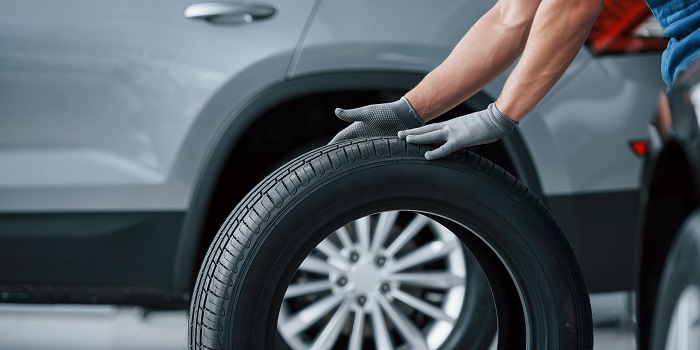 But here, too, care will not be superfluous: it should fit your particular car and be selected based on the type of terrain. Properly selected tires are both safety and comfort, which not all used tires can be proud of.
But here, too, care will not be superfluous: it should fit your particular car and be selected based on the type of terrain. Properly selected tires are both safety and comfort, which not all used tires can be proud of.
Buying tires is an important business. How to proceed? Save right away or invest in new tires? How often to change it and many other questions will find their answers in different ways for everyone. Only one thing can be said for sure - used tires reduce the safety of your ride, no matter how high-quality they are.
Especially to make it easy for you to choose the right tires for your car, we have developed the most convenient form of tire selection.
Take a look at the main page of the site: http://koleso-oz.ru/
With this form, you will be able to choose the model that suits your car. So, now it will be easier for you to decide which summer tires are better to choose.